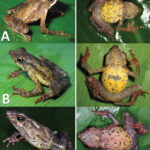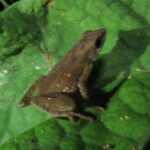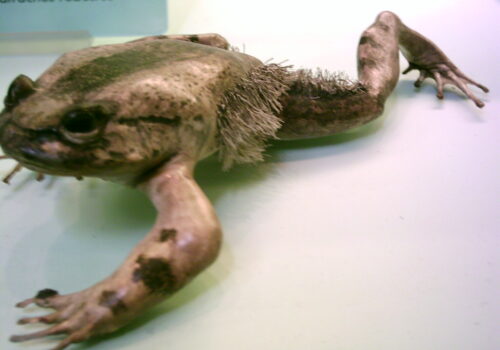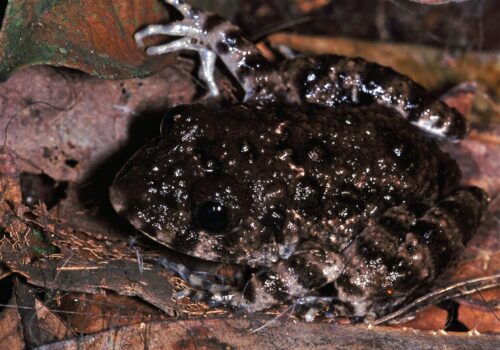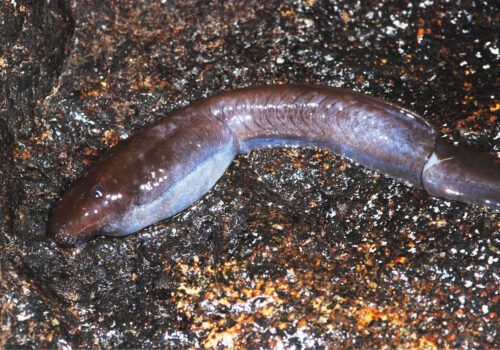- Exploring the Hidden World of Leptopelis mackayi: Africa's Enigmatic Forest Tree Frog
- Taxonomy and Classification
- The Secretive Realm of Mackay’s Tree Frog: Natural Habitat
- Physical Characteristics: Camouflaged Beauty of Mackay's Tree Frog
- The Hidden Life: Behavior and Life Cycle of Leptopelis mackayi
- Guardians of Ecosystem Balance: The Ecological Role of Leptopelis mackayi
- An Amphibian Under Siege: Threats and Conservation Challenges
- Cultural and Scientific Significance
- Appreciating and Protecting Leptopelis mackayi
Exploring the Hidden World of Leptopelis mackayi: Africa’s Enigmatic Forest Tree Frog#
In the shadowy depths of Africa’s verdant coastal forests resides a creature of remarkable mystery and subtle charm. Leptopelis mackayi, commonly known as Mackay’s Tree Frog, is an enigmatic frog species whose quiet existence amidst the lush foliage and gentle streams embodies the fragile splendor of African biodiversity. Known scientifically as Leptopelis mackayi, this captivating amphibian holds secrets that are essential not only to our understanding of tropical ecosystems but also to the deeper mysteries of amphibian life itself.
While Leptopelis mackayi may not flaunt vibrant colors or dramatic movements, it quietly contributes to intricate biological webs and allows a privileged glimpse into a subtle, often-overlooked realm of life. As we explore the fascinating details of this species, we’ll discover not only the role it plays in its habitat but also how deeply interconnected all forms of wildlife are with the health of our planet.
Taxonomy and Classification#
Belonging to the family Arthroleptidae, Mackay’s Tree Frog is a member of the genus Leptopelis, a group known for their arboreal lifestyle and often cryptic coloration. The genus name Leptopelis roughly translates as “slender pelvis,” reflecting certain skeletal adaptations suitable for climbing. Within this fascinating group, Leptopelis mackayi holds a unique position, characterized by specific morphological and genetic traits that warrant its distinct species status.
This species was first described scientifically by Arthur Loveridge in the year 1941. Investigations illustrate its close evolutionary relationship with other forest-dwelling Leptopelis species, though genetic studies suggest notable distinctions, underscoring the complexity hidden within what many might dismiss as “just another tree frog.”
The Secretive Realm of Mackay’s Tree Frog: Natural Habitat#
Leptopelis mackayi inhabits a narrow and specialized ecological niche along the coastal forests and moist lowland habitats of East Africa, primarily concentrated along Kenya’s coastal forests, specifically in regions such as Arabuko-Sokoke Forest and Shimba Hills Reserve. Humid, evergreen woodlands with dense canopy cover and an abundance of fallen vegetation and freshwater streams provide the ideal ecology for this species.
Life in these shadowy habitats means Mackay’s frogs spend much of their time concealed beneath thick layers of leaf litter, occasionally venturing upward into low vegetation during the humid nights. The ambient moisture, reliable leaf cover, and soft substrate offer optimal conditions not only for their survival but also for effective predator avoidance and successful reproduction.
Exploring the coastal forests harboring this secretive frog species feels akin to stepping into a living cathedral of nature. Towering canopies filter dapple light down to the forest floor, invisible sunlight transfigured into tiny emerald patches of soft illumination. Within this dim and humid labyrinth, Leptopelis mackayi quietly thrives in discreet harmony.
Physical Characteristics: Camouflaged Beauty of Mackay’s Tree Frog#
Mackay’s Tree Frog exhibits a remarkable physical adaptation toward stealth and survival. Measuring roughly 4 to 6 centimeters in length, its size reflects the subtle balance required for arboreal and leaf-dwelling life. Its leathery skin, finely textured and often covered in granular bumps, presents an ideal camouflage pattern encompassing shades ranging from olive and brown to greyish-green, superbly blending with the surrounding foliage and vegetation.
When observed closely, striking details immerge: large, expressive eyes prominently set in a broad head, often displaying mottled bronze or golden irises. These impressive eyes not only enhance nocturnal visibility but also provide acute detection of threats and prey alike. Enlarged, well-developed toe pads grant the frog impressive climbing prowess, enabling secure and graceful navigation across leafy surfaces and vertical tree trunks.
Its dull coloration, rather than acting as a disadvantage, greatly enriches its survival potential, offering a natural safeguarding cloak against predators like snakes, owls, and small carnivorous mammals. So meticulously adapted is this species to its surroundings that one might easily overlook its quiet presence unless specifically seeking it out amid the forest litter and tangled vegetation.
The Hidden Life: Behavior and Life Cycle of Leptopelis mackayi#
Nighttime Hunters of the Rainforest Floor#
Like most tree frogs, Leptopelis mackayi is primarily nocturnal, emerging from its daytime retreat after dusk. The cover of darkness provides security, allowing it to utilize stealth and surprise as primary hunting strategies. At night, the forest floor transforms into a formidable hunting ground, rich in a diverse array of prey.
Mackay’s frogs favor a diet of insects and small invertebrates, skillfully capturing their meals with rapid tongue flicks. From beetles and moths to ants and spiders, the frog’s hunting habits serve a dual purpose— they maintain prey populations in a natural balance while drawing nourishment necessary for its continued survival.
Gentle Songs and Forest Pools: Breeding Behavior#
Little is as enchanting as the gentle chorus echoing in a coastal forest at night during frog breeding season. Leptopelis mackayi males venture to shallow pools near streams during rainy seasons, calling delicately in short, melodious notes, aiming to attract nearby females. Thriving within seasonal rhythms, the species’ reproduction is intricately linked to rainfall and water availability.
After successful courtship, females lay clusters of gelatinous eggs upon submerged vegetation in shallow temporary pools. Tadpoles, upon hatching, develop swiftly in these pools, rapidly progressing through their larval stages before metamorphosing into miniature frogs and emerging onto land to join the adult population. This rapid and efficient life cycle timing closely aligns with the predictable but fleeting rainy season, demonstrating a beautifully adapted evolutionary strategy.
Guardians of Ecosystem Balance: The Ecological Role of Leptopelis mackayi#
The discreet life led by Mackay’s frogs holds profound ecological significance. These small amphibians function both as predators and prey, forming integral threads in their forest ecosystem’s tapestry. By consuming large quantities of insects and small invertebrates, these frogs help regulate insect populations, indirectly benefiting flora health and overall ecological balance.
Likewise, as prey themselves, Leptopelis mackayi provide an indispensably rich protein source for a variety of carnivorous creatures, including snakes, birds, and small mammals. Additionally, their existence serves as an important bioindicator, their presence—or absence—highly reflective of ecosystem health and the quality of the habitat they occupy.
An Amphibian Under Siege: Threats and Conservation Challenges#
Mackay’s Tree Frog, currently classified as “Endangered” by the International Union for Conservation of Nature (IUCN), faces significant risk from habitat loss and fragmentation. Coastal forest degradation through logging, agricultural clearing, and infrastructure expansion starkly threatens the frog’s critical habitats, diminishing its available breeding pools and refuge.
Further exacerbating these threats are climate change and pollution, altering rainfall patterns and aquatic habitats essential to reproduction. Conservation measures in Kenyan coastal areas—such as forest reserves, protected areas like Arabuko-Sokoke, and community-supported conservation programs—play essential roles in ensuring the species’ survival into future generations.
Cultural and Scientific Significance#
Beyond their ecological importance, species like Leptopelis mackayi occupy fascinating cultural and scientific niches. Locally, many communities regard indigenous frogs as symbols of rain, renewal, or even ancestral spirits. Scientifically, amphibians like Mackay’s Tree Frog serve as pivotal subjects for studying ecological resilience, disease resistance, and environmental change indicators.
Appreciating and Protecting Leptopelis mackayi#
Mackay’s Tree Frog embodies subtle beauty intertwined with profound ecological importance. Unveiling the mysteries of this elusive species not only enriches our knowledge of biodiversity but underscores the urgency required in conservation.
By deepening our understanding and appreciation of amphibians like Leptopelis mackayi, we draw closer to safeguarding the fragile interconnections underpinning life in our beautiful, threatened world. You, too, can play a role—support local conservation endeavors, spread awareness, and explore further into the remarkable world of amphibians and their habitats.


